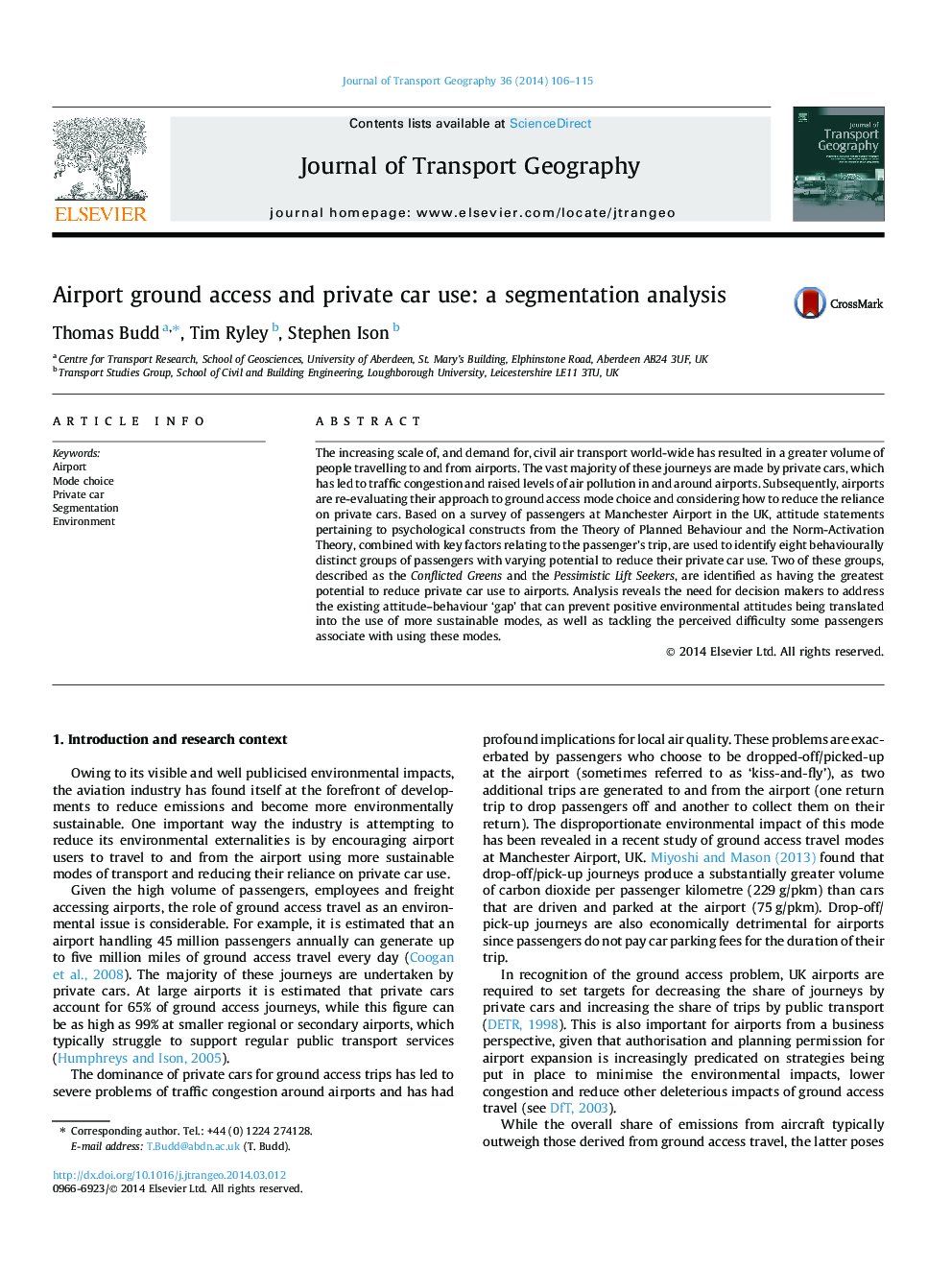| کد مقاله | کد نشریه | سال انتشار | مقاله انگلیسی | نسخه تمام متن |
|---|---|---|---|---|
| 1059339 | 1485431 | 2014 | 10 صفحه PDF | دانلود رایگان |
• The potential for reducing car use to airports was examined.
• A significant share of passengers have the potential for behavioural change.
• Translation of pro-environmental attitudes into mode choice is a key policy goal.
• Perceived difficulty of using public transport is a barrier preventing its use.
• It will become increasingly necessary to implement ‘harder’ disincentive measures.
The increasing scale of, and demand for, civil air transport world-wide has resulted in a greater volume of people travelling to and from airports. The vast majority of these journeys are made by private cars, which has led to traffic congestion and raised levels of air pollution in and around airports. Subsequently, airports are re-evaluating their approach to ground access mode choice and considering how to reduce the reliance on private cars. Based on a survey of passengers at Manchester Airport in the UK, attitude statements pertaining to psychological constructs from the Theory of Planned Behaviour and the Norm-Activation Theory, combined with key factors relating to the passenger’s trip, are used to identify eight behaviourally distinct groups of passengers with varying potential to reduce their private car use. Two of these groups, described as the Conflicted Greens and the Pessimistic Lift Seekers, are identified as having the greatest potential to reduce private car use to airports. Analysis reveals the need for decision makers to address the existing attitude–behaviour ‘gap’ that can prevent positive environmental attitudes being translated into the use of more sustainable modes, as well as tackling the perceived difficulty some passengers associate with using these modes.
Journal: Journal of Transport Geography - Volume 36, April 2014, Pages 106–115
